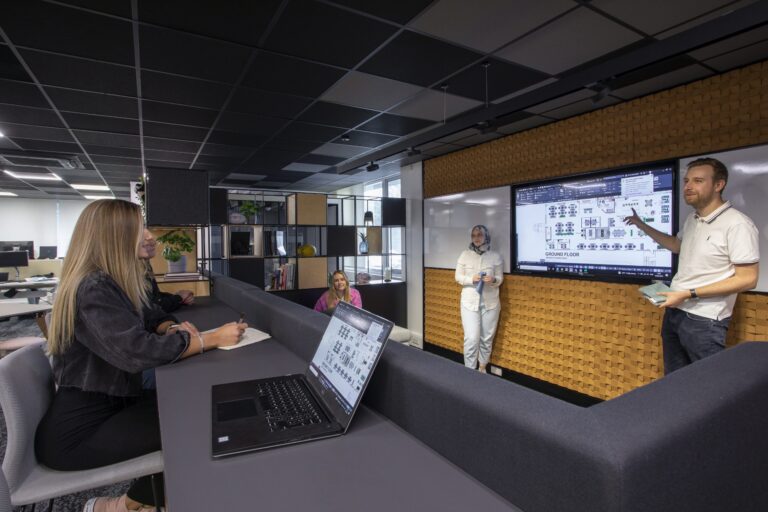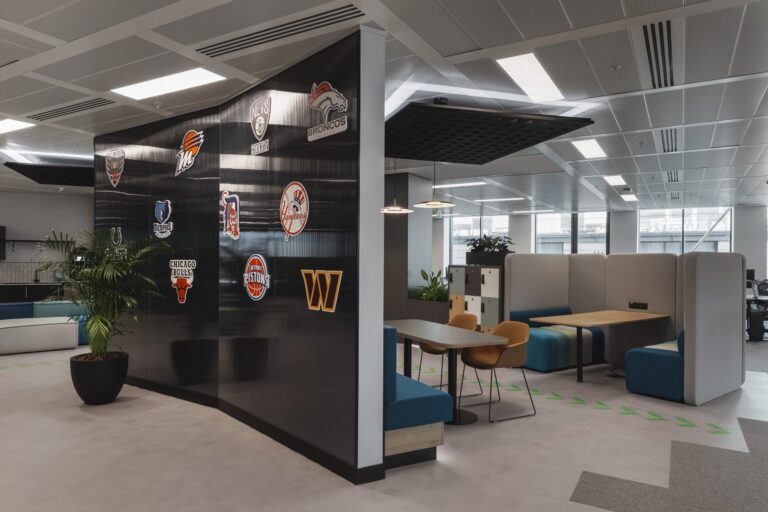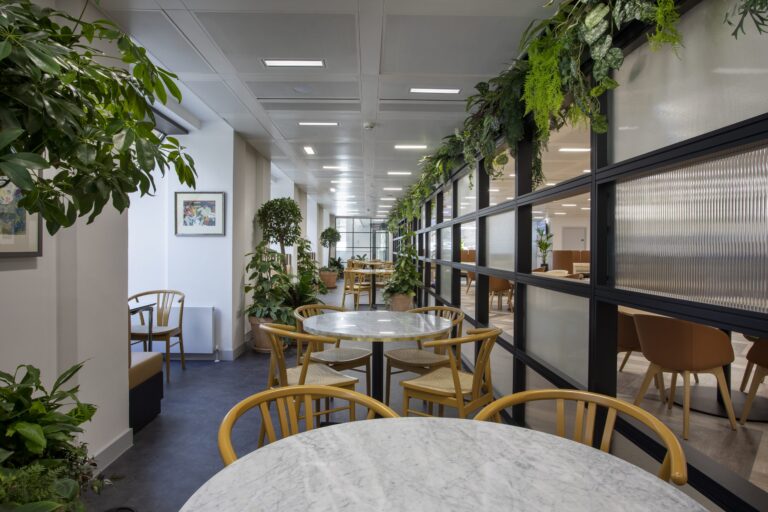
Are we witnessing the death of the boardroom?
Date
14 May 2024
Read length
5 min
With ever increasing pressure on office space to work harder, is there room in the modern office for a traditional boardroom?
Put simply, the boardroom can be defined as “a room where the people who control a company or organisation meet”. With the earliest documented reference to the boardroom in 1731, and Merchants’ Meetings dating back earlier than that to the 16th Century, the boardroom has been an enduring component of the office since the very beginning!
Like many people, my first experience of seeing a boardroom was in a backdrop to a scene in a film; opulent wood panelled walls, with guilt edged pictures of alumni or political figures and a large ornate table surrounded by sumptuous leather armchairs. Or perhaps it was the gadget laden super high-tech setting in a James Bond film, where at the touch of a button it could transpose itself from furniture to a panorama of Fort Knox; whatever it was, you knew it was an important and exclusive place – imposing and awe-inspiring in equal measure.
Physically very comfortable (sometimes!), boardroom meetings could go on for many hours. However, it’s as much about the aesthetic as well as the comfort. To someone new they can be psychologically an intimidating place – maybe that was intentional, to subliminally reinforce that the company is bigger than any individual.
In the new era of working, however, maybe it’s time to challenge the traditional boardroom and its status as a one-dimensional, exclusive component of the modern workplace. Let’s walk through the traditional elements of the boardroom and reimagine how this might look…
The Exclusivity
As we’ve detailed, the boardrooms have traditionally been an invite-only area, intentionally designed to have an aura of intimidation about them for those who do not regularly reside in this space.
In the modern office, where there is a real focus on multi-functionality and multi-purpose, a space that remains exclusive to the small minority really isn’t viable – and for many organisations, it’s not what their culture is all about either.
By creating a warmer and more welcoming environment in the ‘boardroom’ – one that represents the values of the organisation, the space will feel a lot more inclusive and accessible to the wider workforce.
The Size
Typically, boardrooms are big. We’re often asked to accommodate upwards of 20 people in these spaces. With the exception of training, and large team meetings, it’s very rare that an enclosed space accommodating more than 20 people will be utilised to its full capacity. For example, often lawyers still want to sit 30 people round a table, but it’s so infrequent that lots outsource this and use the space in the office for more frequently needed facilities.
But what if we made the boardroom flexible in its size? Bifold walls are one solution to this, to simply split up the space for different purposes. However, we’re very aware that this solution isn’t for everyone, largely due to the aesthetics as well as the practical constraints of moving the walls and furniture to accommodate the spatial divide, which may require having facilities colleagues ready to mobilise. With increasingly common hybrid meetings, however, acoustics also need to be even more closely scrutinised when considering a bifold wall; the room must be acoustically sound in all configurations, especially with people now turning the volume up 100% on a virtual call!
Perhaps another option is to use more flexible partitions to divide the space into multiple semi-private and hackable spaces? This could be a really quick, easy, and practical solution to provide multi-functional spaces rather than enclosed meeting rooms.
A quick tip if you take this flexible partition approach – for it to be well utilised, provide some imagery of possible configurations of the space to all colleagues. It’s rare that employees have experienced full autonomy and flexibility to change a space in the office, so support and encourage your colleagues to explore this through providing some possible options.
The Table
This is a biggie – no traditional boardroom is complete without a looming, solid statement piece; that large, rectangular boardroom table. Yes, it is certainly a functional component of the boardroom when accommodating large numbers of people in a formal space for a board meeting, however, what happens to this space for the rest of the month? We’ve consistently found that it’s dramatically underutilised due to its rigidity.
Reimagining the boardroom table to comprise of smaller, modular tables, which can be reconfigured to suit different room set-ups will create a multi-functional space. Smart design and product selection can ensure that the formality and stature of the traditional boardroom table is not compromised, whilst enabling flexibility of the space when board meetings are not taking place. We are also finding that soft seating is being built into the peripheral areas of the room, such as couches or bleacher seating, to again, diversify the function of the space and soften the intimidating vibe.
If taking this reconfigurable approach, however, be sure to include a furniture store in close proximity!
The Singular-Purpose
The purpose of the boardroom has traditionally been limited – largely due to the rigidity and exclusivity of the space as we’ve discussed. But, with greater flexibility comes greater possibility. We’ve already seen these principles rolled out in social/ kitchen spaces, which were historically like ghost-towns outside of meal-times, but with smart design, their use has been extended to informal meetings throughout the day, or larger Town-Hall event spaces.
Reflecting on the purpose of your office, and the requirements of your people and organisation within the space, you are likely to find countless purposes for the ‘boardroom’. It may be that you simply split the space into multiple meeting rooms, supporting different-sized meetings. It could be a dynamic training room or suite. It could be smaller, semi-private meeting or mentoring spaces. It could even be that you dedicate the space to quiet working.
With all these possibilities – do you still need a dedicated boardroom?
See how we could help with your new office interior design or office design and build project here
Get in touch
We love nothing better than talking all things workplace and design – got a question, potential project or just need some guidance?
Drop us a note…





